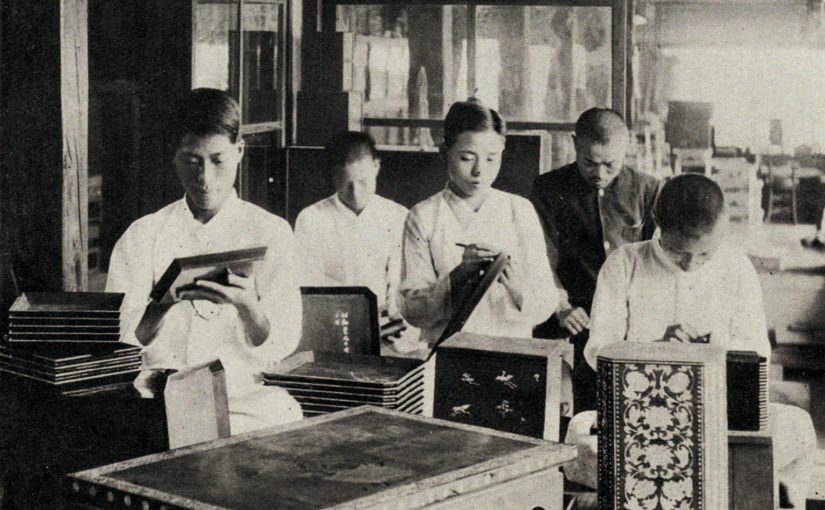
A little translated excerpt from <Iwangjik Crafts Workshop and Contemporary Crafts in South Korea>, written by Gongho Choi
The development of modern crafts has not been investigated due to the lack of historical records and researches. It is a lucky that I’ve got recently found design sketches and photographs of Iwangjik’s products, so that now it has become possible to see the production process of Iwangjik though limited.
The workshop, titled as Hansung(the name of capital since the beginning of Chosun dynasty) Crafts Workshop, founded in 1908, had ran its business for 30 years till the era of Japanese occupation in Korean peninsular faced its end, in other words the end of WW2. It was a facility producing crafts and played a crucial roll in developing modern Korean crafts.
It was when various traditional, cultural values were to be destructed that the workshop was established, and the modernization in Korean peninsular was initially began in this era by external influence. the workshop’s official aim was “to encourage the nation’s craft tradition” while this institution actually restored some bits of traditional craft skills as fine as the product quality of Kyoung-gong-jang(light factory)s, which had produced for long times various office and domestic goods only for governmental bodies. Also, it was a crucial moment in the modern history of Korean crafts that the workshop, as a semi-institutional body, trained a number of craftspeople who was to make the nation’s crafts tradition survived and who later became profound influences on the restoration of previously-demolished craft traditions.
In addition, this organization claimed that “the designs planned here should be made on possible traditional ways though production processes had to be modernized” as opposed to the dominated mood of modernization or Japan-ization in Korea. This was apparently a bold, important approach to restore and cherish tradition and was when nationalistic intelligentsias were influenced by Dong-Do-Seo-Gi(Eastern world take morality or inherited identity while Western world has science or technology), which was a widespread idea for the restoration of national sovereignty at the time.




